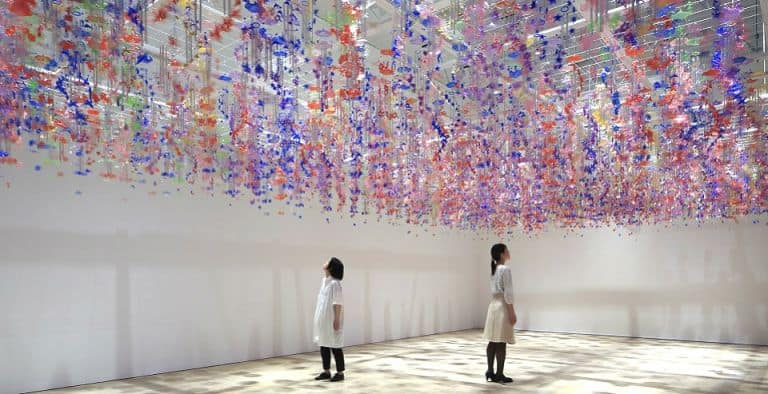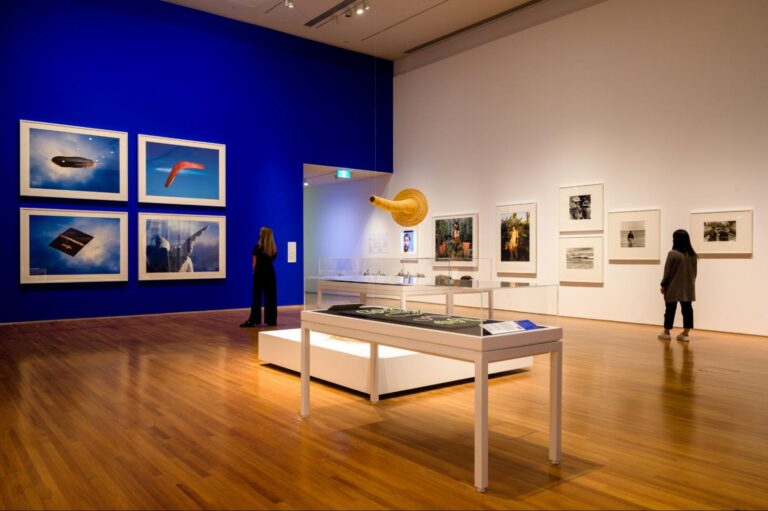I’d like to believe that I’m not a slave to consumerism. That watching a commercial where a glamorous model bites into an expensive ice cream doesn’t make me want to go out and buy an entire box of said ice cream. But yet, it does.
I have little self-control and a lot of exposure to brands.
And the reason for that?
Advertising.
Whether we realise it or not, advertising has had a huge impact on our lives. From commercials and billboards, to conveniently placed products in a movie or TV show, it permeates almost every aspect of our lives.
Academic Anandi Ramamurthy notes in her essay Spectacles and Illusions: Photography and Commodity Culture, that media images which focus on an attractive world of glamour and entertainment, are usually packaged “around an array of feel-good factor articles and presentations to remove the sting from conflict and contradiction and to present these as a distant another world.”
She further explains that images which are fed to the public have the ability to influence human interaction and desires such that the act of living has been subsumed by the act of acquiring. Through the proliferation of the mass media, the physical act of acquiring has itself been displaced by the need to project the appearance of having acquired. This commodity culture renders consumers as powerless, and images (whether photographic or otherwise), have the ability to create an alternative aspirational world which is divorced from reality.
These days, advertising may seem to be a lot different than it did before the internet and social media became dominant marketing platforms, but the underlying notions of aspirational living and the commoditisation of human interaction, remain. Social media influencers are now able to build entire empires simply by marketing objects to their large followings and by projecting the correct illusory appearances of glamour and glitz. Just look at Kylie Jenner.
Indeed, the formula behind a successful ad, especially a digital one, has become more of a science than ever before. Ever noticed how an ad about a shampoo you may have been looking for online, conveniently pops up on Facebook minutes after you searched for it on Google?
A little creepy isn’t it, knowing that the internet is watching your every move?
In comparison, advertising a few decades ago was far more traditional in its approach. Singapore’s National Library has pulled together a stellar exhibition, Selling Dreams: Early Advertising in Singapore, which gives us a glimpse into what it was like to be a consumer decades ago:
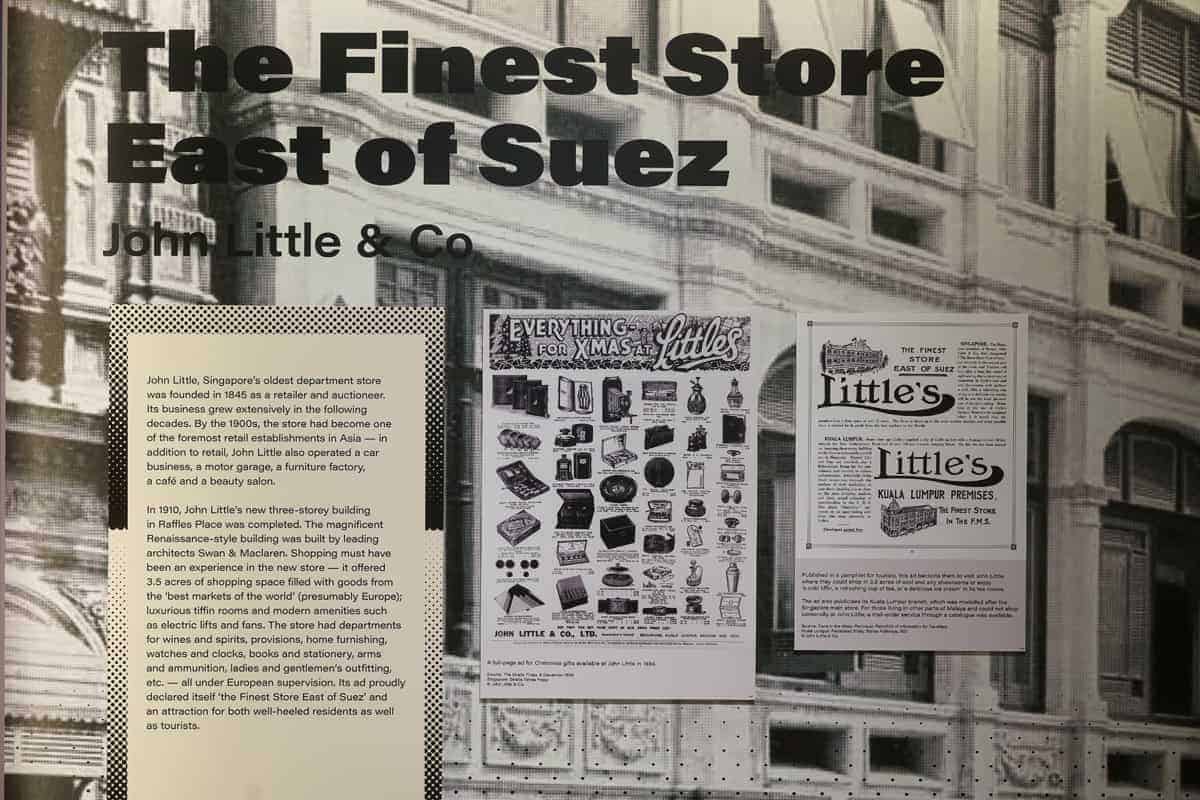
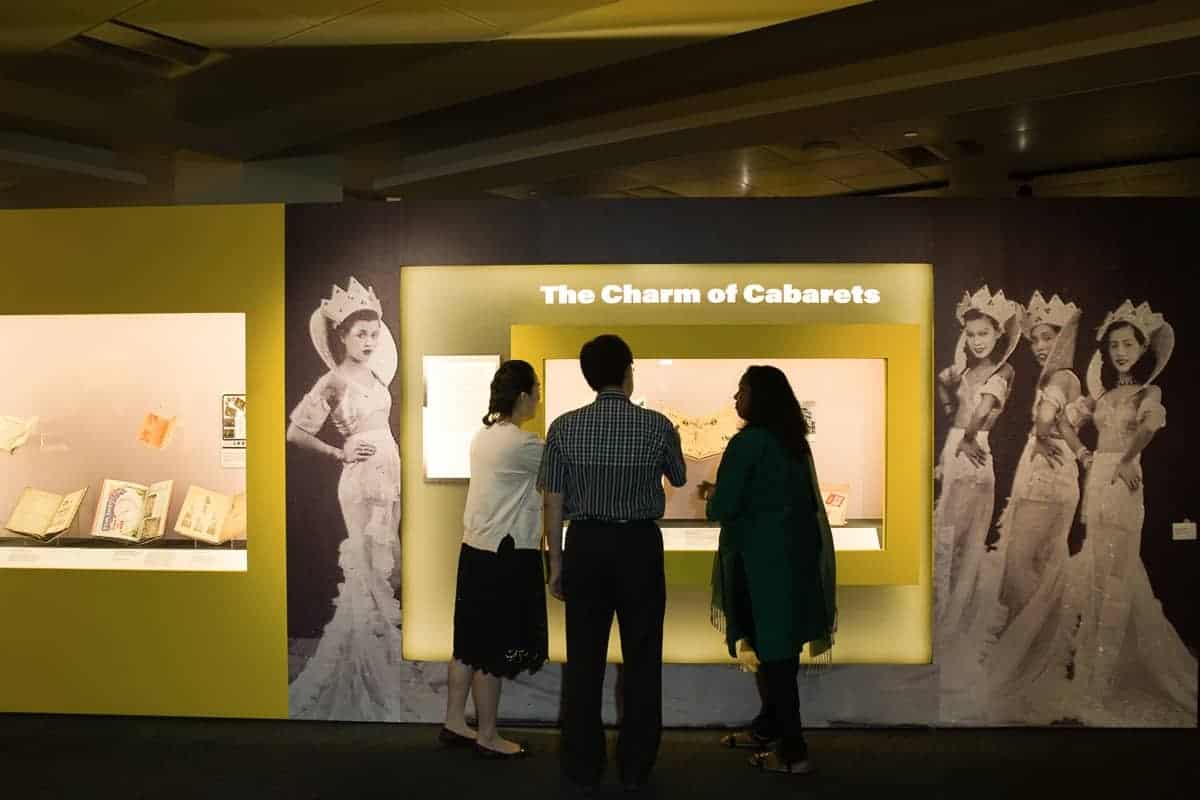
Selling Dreams: Early Advertising in Singapore
The show features advertising materials from the 1830s to 1960s in the National Library collection and explores the impact of advertising on Singapore society, while also giving us a unique glimpse into the country’s past.
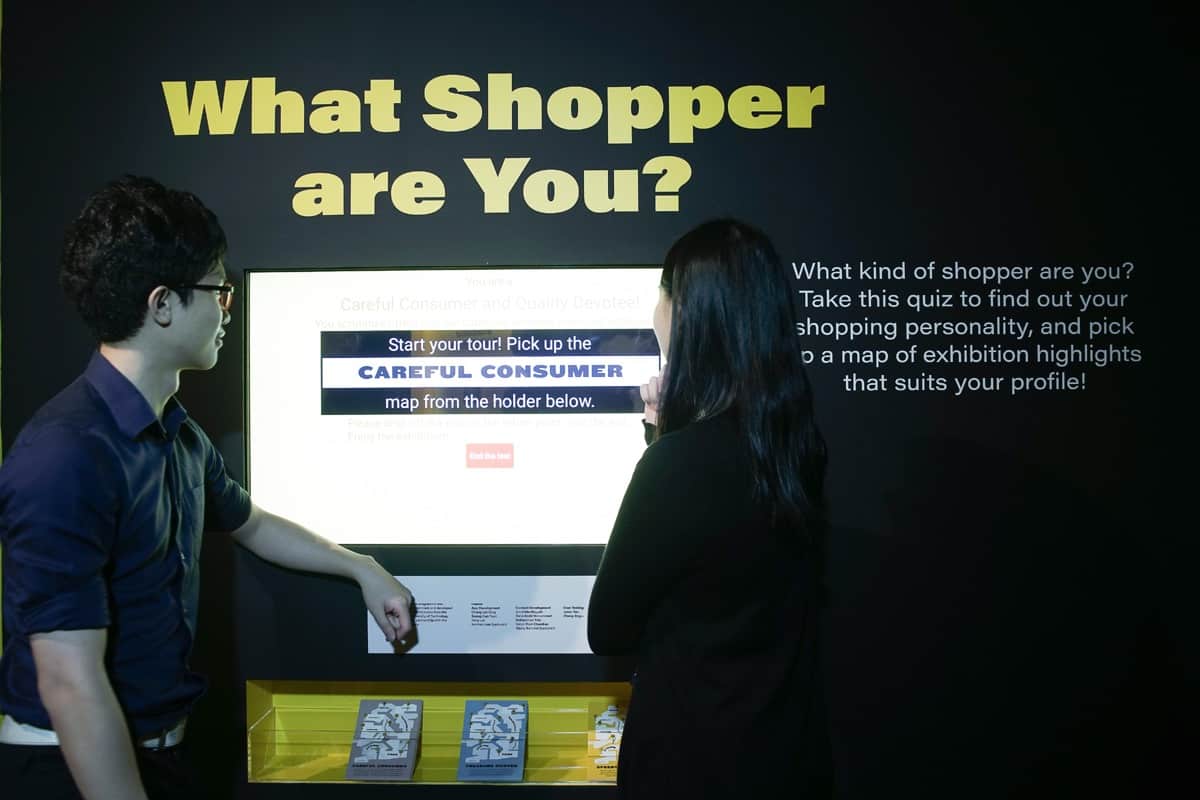
Collaborating with Singapore Press Holdings (SPH) and the Singapore University of Technology and Design (SUTD), the exhibition simulates what it would be like to be a consumer in a bygone era, with highly interactive stations and archived materials that are set up in the manner of a department store. There is even a mini personality test at the beginning of the exhibition to determine the type of shopper you are and how you should approach the show:
It struck me that the ads on display helped to illustrate the evolution of our society in a number of different ways.
The Female Economy and The Allure of Luxury
It’s no secret that women are a major target audience when it comes to the advertising of goods and services. Purchasing power amongst women is so strong that they are said to now drive the world economy.
Accordingly, advertisers continue to clamour to reach out to women.
Women in the 20th century were considered the primary caregivers of the family and as such were the ones who made purchases for the household. As they moved into the workforce by the 1950s and 60s, advertisers would market products framed as being in the ‘best interests’ of women to purchase, as such products would make their lives easier:
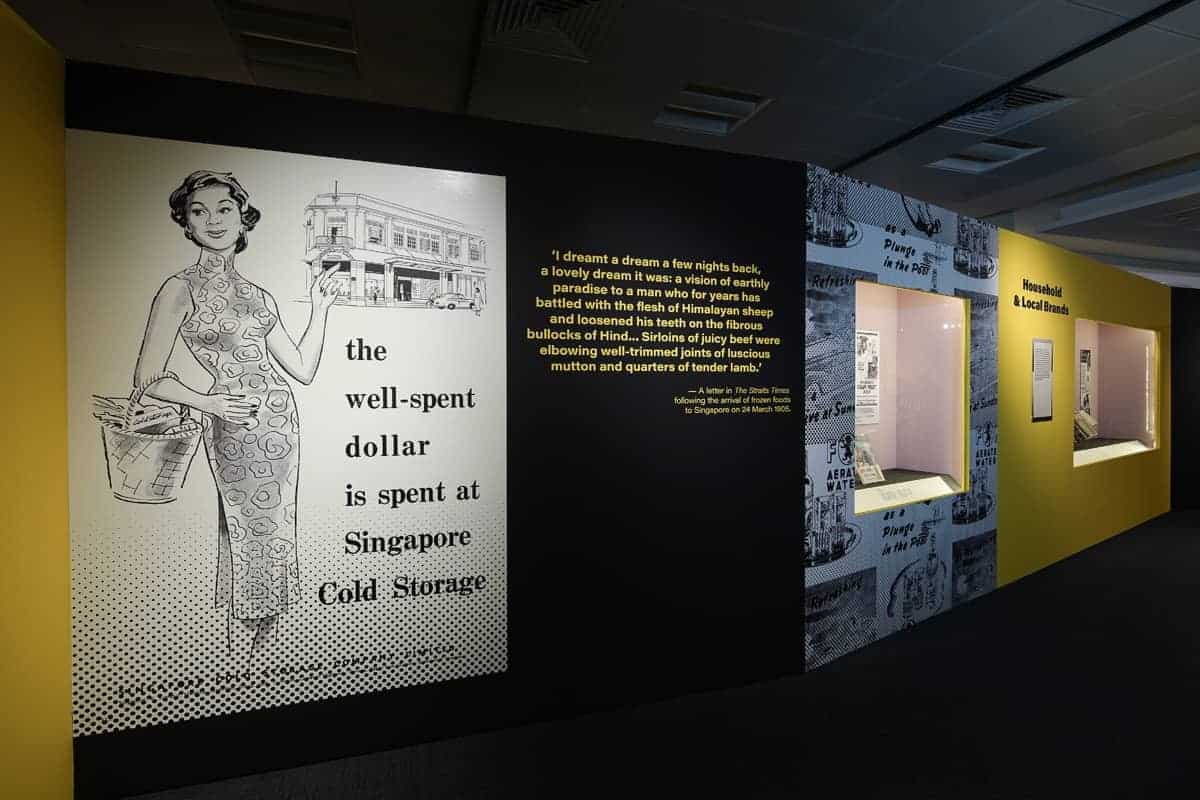
Colonialism and its resultant expatriate travels also created the niche market of the ‘affluent European wife’:
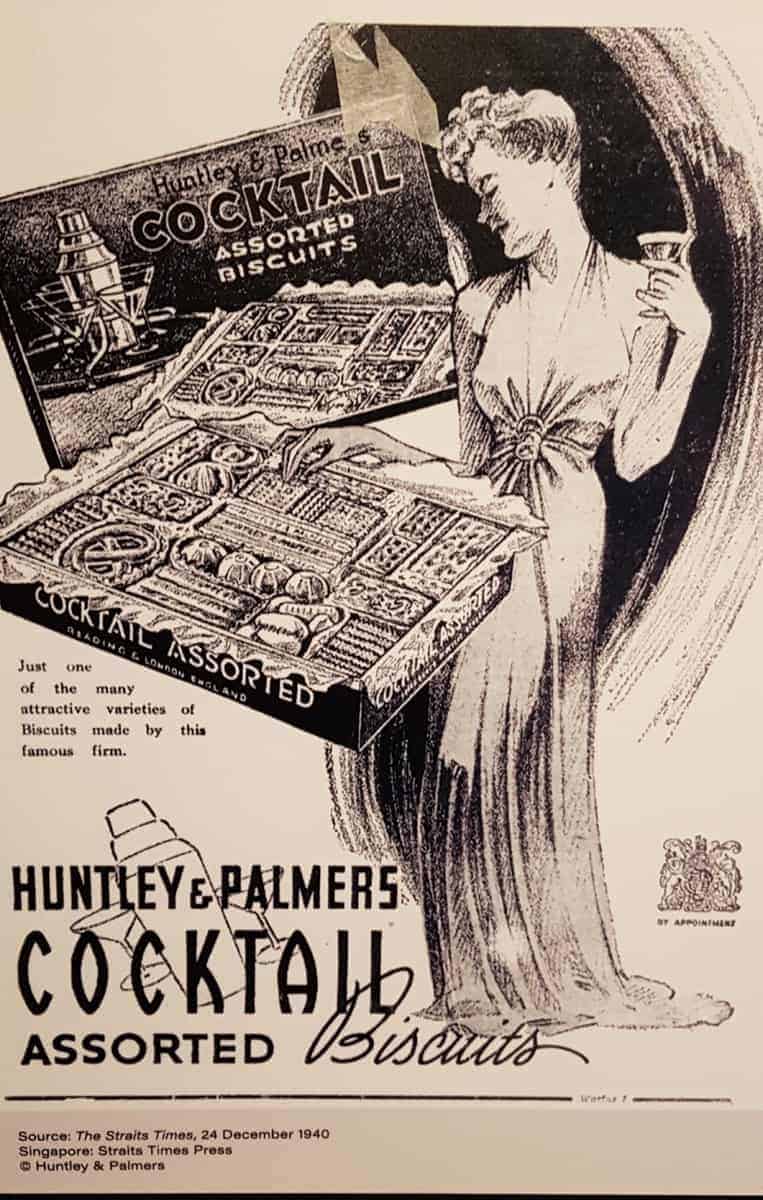
Agencies would work towards creating images of a woman being waited on by servants, while lounging with certain brands, in order to tap into a subconscious longing or ideal that these women or households might aspire towards:
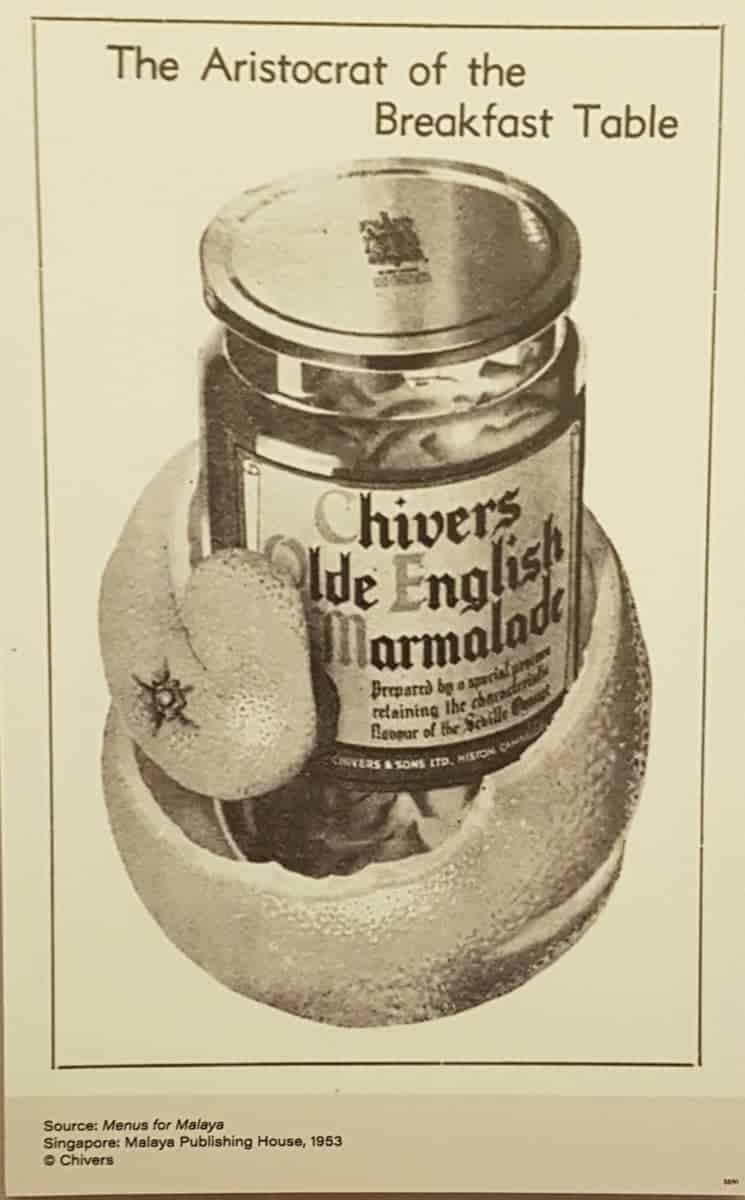
It would not be too far fetched to say that societal attitudes toward gender norms and the influence of advertising, work hand in hand. We still see these assigned roles being played out in advertisements for home goods, which still mainly target women and mothers.
These days, ads hawking the ideas of ‘push presents’ or ‘right-hand rings’ outwardly celebrate female power – but never more so than if it’s wrapped up in some shiny purchased packaging.
Bold Claims and Magic Potions
In poorly-regulated markets, the wildest of claims can be made. In the early 20th century, it was more difficult for the regular consumer to differentiate between fact and fiction. It meant that brands and advertisers were able to come up with the most incredible statements.
It was easy to find yourself surrounded by ads promoting pills and over the counter medicines that could magically cure all your ailments:
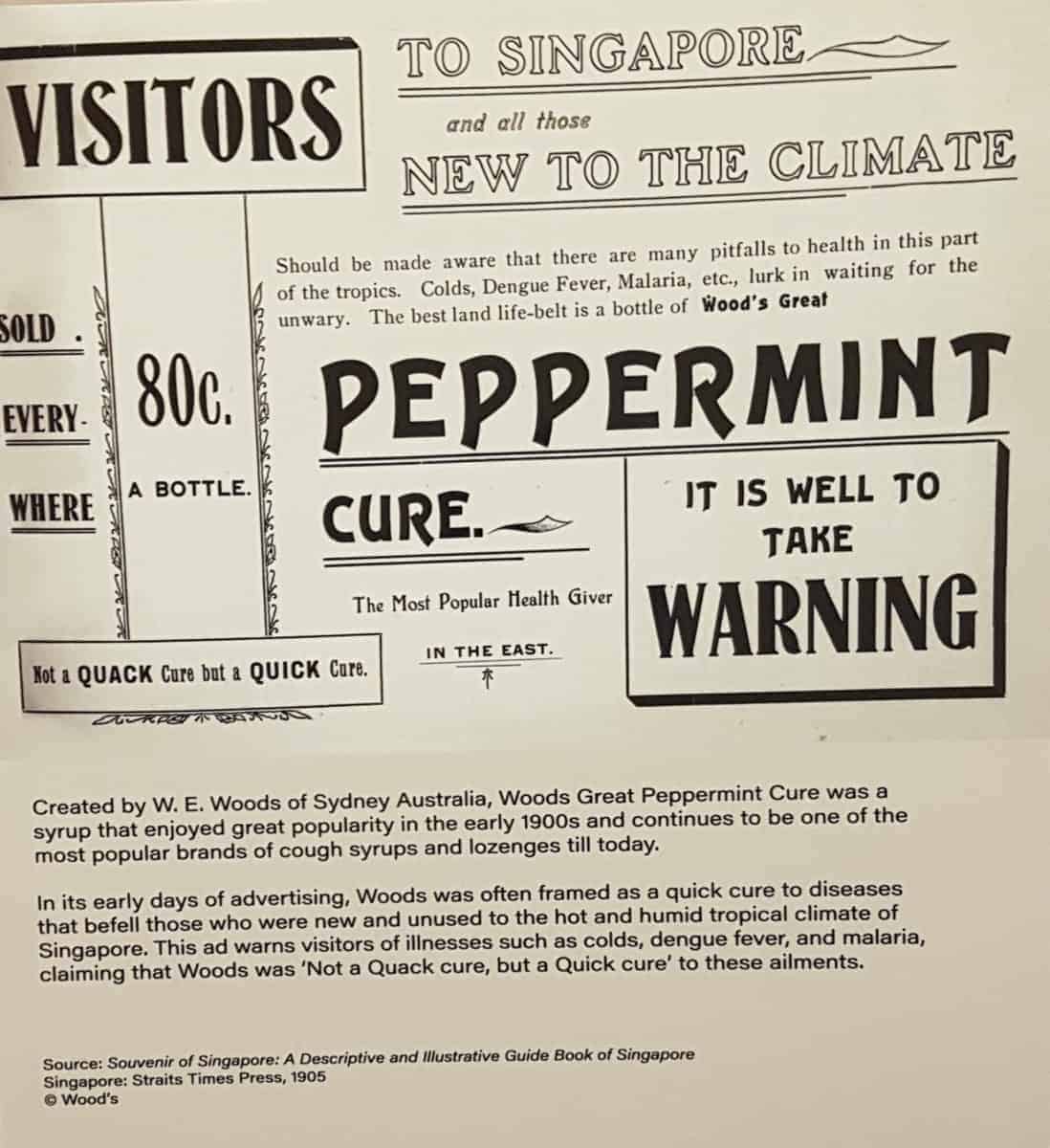
Brands like Axe Oil were even marketed as a kind of fertility oil to couples struggling to conceive!
It wasn’t until the mid-1950s when this practice of embellishing the truth in medical advertising would come to an end in Singapore, with the introduction of the Medicines (Advertisement and Sale) Act which stated that medical products and services had to be backed up by legitimate studies and research.
The general Singapore population became more health conscious from the late 19th century to the early 1920s. And with that, came the introduction of canned and imported goods that were marketed as superfoods. Before acai bowls and chia seeds, Milo and Horlicks were touted as essential mainstays in everyday life.
Horlicks was even advertised as a drink which maintained beauty and vitality: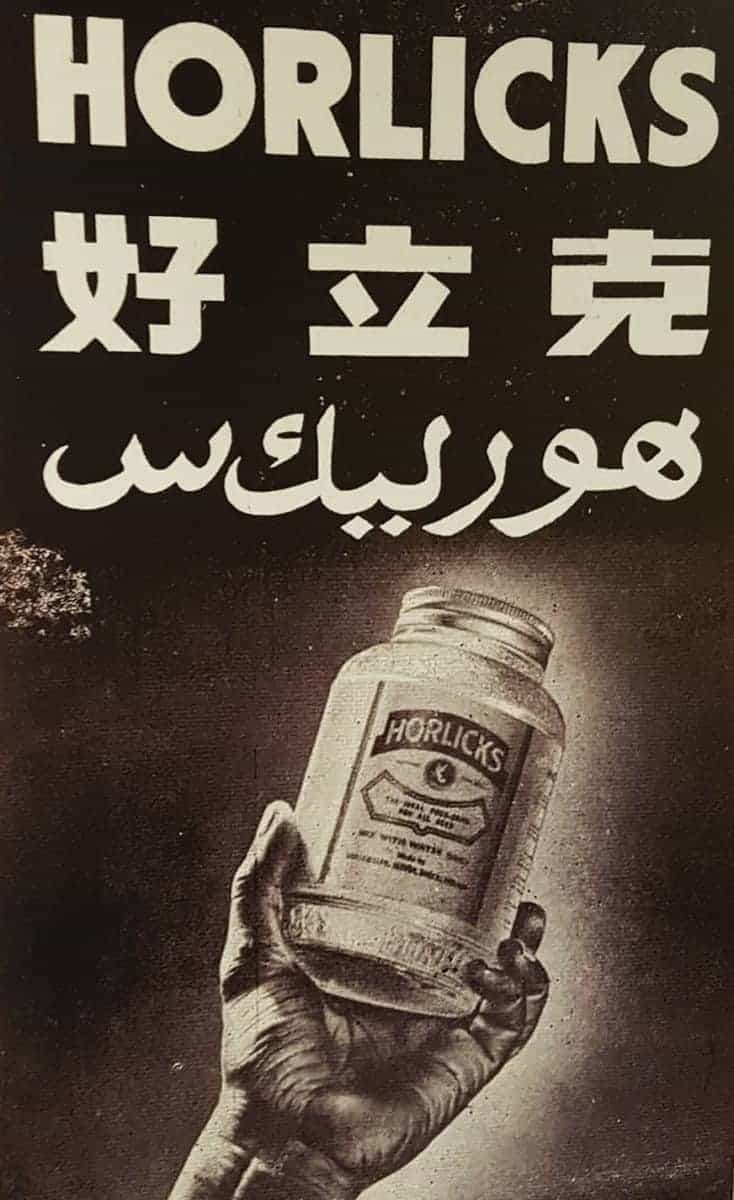
Its advertorials would caution people against a condition called ‘Night Starvation’ – something that occurred because of a lack of nutrition during the night and would result in people waking up in the morning looking almost skeletal.
Yes, you read that right:
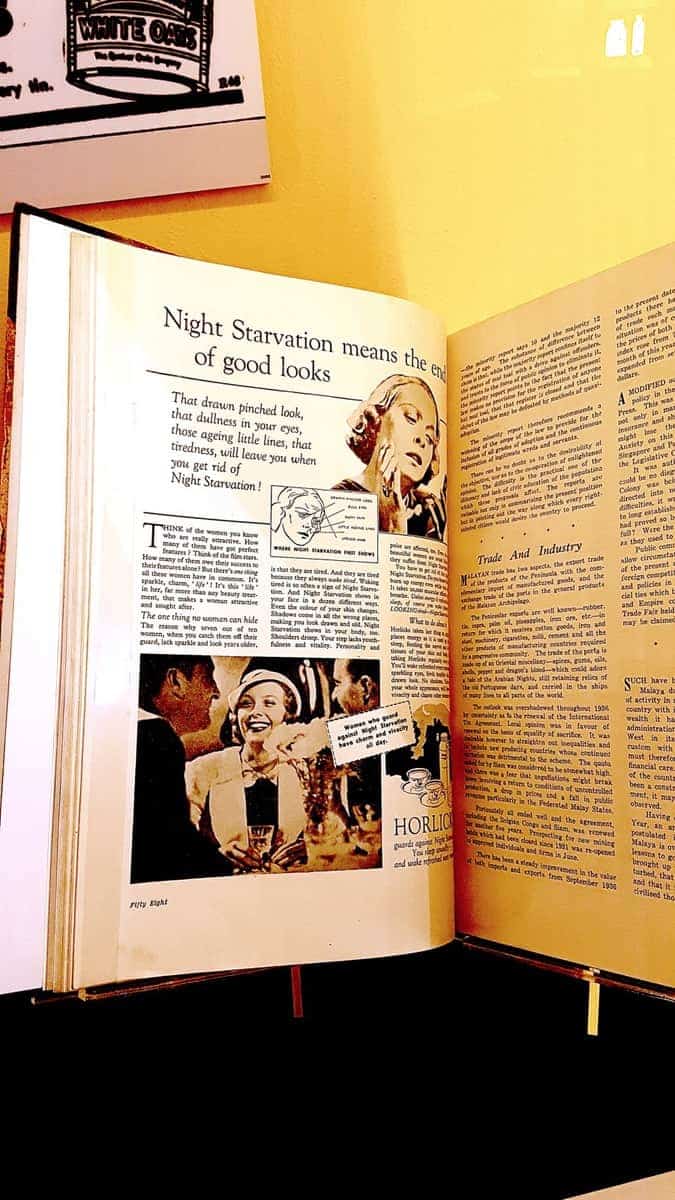
What could prevent such a terrible ‘ailment’ as Night Starvation? You guessed it. A cup of Horlicks.
No matter how ludicrous this seems, it appears to have become an idea that has stuck. Perhaps, in a period of time which spanned two World Wars, good health and robust vigour were things to aspire towards (instead of say, the fragile 1990s silhouettes inspired by supermodel heroin chic). Night Starvation is no longer a believable concept, but the practice of drinking a cup of Horlicks before bed is still rather widespread.
While brands are no longer able to use overtly dubious strategies such as these, we still see the remnants of such advertising on social media and digital platforms. Instead of being fearful of Night Starvation, the pendulum seems to have swung entirely the other way, with social media stars now touting weight loss teas and vitamins to their followers. The public often hangs onto their every word regardless of whether such products truly work. Companies like Milo have also rebranded and aligned themselves with popular and aspirational figures such as Nathan Hartono (who successfully inked himself a Milo ambassador deal with this interview), and Olympic gold medalist Joseph Schooling.
Commercial Artists Painting Dreams
Early advertising also supported the growth of commercial artists. Without the technology that we have today for design and art, companies relied heavily on visual artists to paint their concepts by hand.
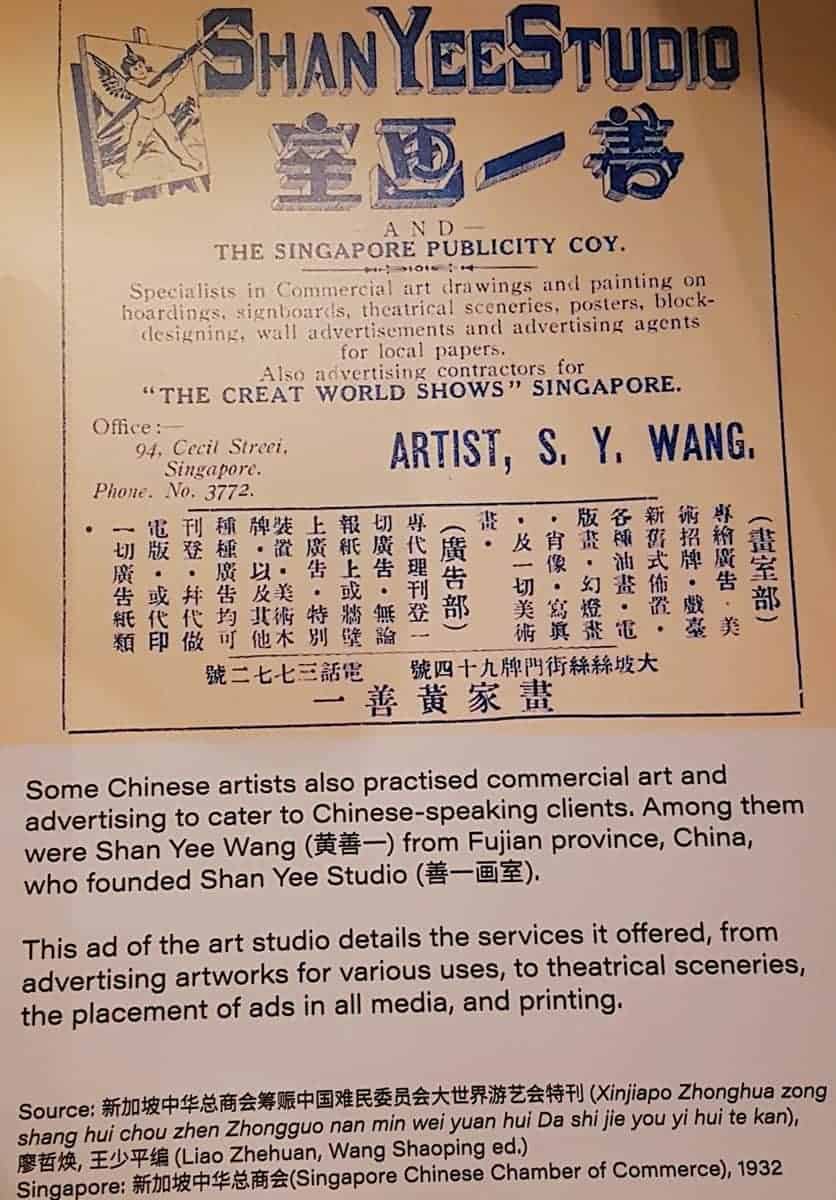
This opened a lucrative avenue for artists to earn an income from advertising commissions. Artists such as Vladimir Tretchikoff and Zhang Ruqi had thriving art studios which created images for brands and places in Singapore.
Vladimir Tretchikoff in particular, a Russian immigrant from China, was an incredibly prominent commercial artist in Singapore. After moving to Singapore from Harbin, China in 1934, he found success as an art director of Warin Publicity Services, an acclaimed agency at the time. Tretchikoff produced many ads in his signature Art Deco style and was also a caricaturist who regularly contributed humorous artworks to The Straits Times. While he would go on to become a celebrated visual artist with works such as The Last Divers and Chinese Girl, (the latter considered to be one of the best selling prints of the 20th century), he is also remembered as a having a massive influence on the pre-war advertising industry in Singapore.
Zhang Ruqi found commercial success in designing ads for brands such as Tiger Balm. While the advertising scene at the time was mainly catered towards Western expatriates, Chinese artists like Zhang were able to carve out a niche for themselves by creating ads for brands which catered to Chinese speaking audiences. Many of these ads featured the ‘picture calendar’ (yue fen pai; 月份 牌) style used by many local Chinese printers at the time, and which is still used today in many Chinese brands and products.
Today, digital design plays a huge part in the advertising industry and commercial artists come in the form of graphic designers, illustrators and art directors.
With a more discerning audience and a tighter regulatory framework, advertisers now have to work a lot harder to sell their products. The in-your-face advertising of yesteryear doesn’t work as well as it used to. In fact, the average consumer today despises having brand ads pop up while they’re online. It’s meant that advertisers need to get a whole lot more creative with their marketing, with many resorting to a cocktail of factors known as BEM – behaviours, emotions and moments. The application of these concepts results in advertising which is rather more discreet. Which is why Milo, once the alpha superfood of the 20th century, is now represented as a nostalgic drink, a quintessential part of the Singaporean childhood experience. Additionally, ads can now come in the form of sappy mini-movies that play into the emotions of the viewer while subtly advertising various products. The recent OCBC ad featuring Gurmit Singh’s life and rise to prominence is a great example of this.
As we grow as a society, our tastes and preferences will surely evolve, and so will our technologies and the ways in which we consume information.
In this veritable sea of changes, only one thing remains constant — the universal human desire for acceptance, and to fit into aspirational social norms.
You can bet your last dollar that advertisers will always have their finger on that particular pulse. (Unless of course it’s rendered too thin by Night Starvation. In which case, let’s hope they’ll still be able to fit into that right-hand ring!)
__________________________
Selling Dreams: Early Advertising in Singapore runs till 24 February 2019 at the National Library Singapore and is accompanied by talks and programmes that provide more insight into the advertising world.








